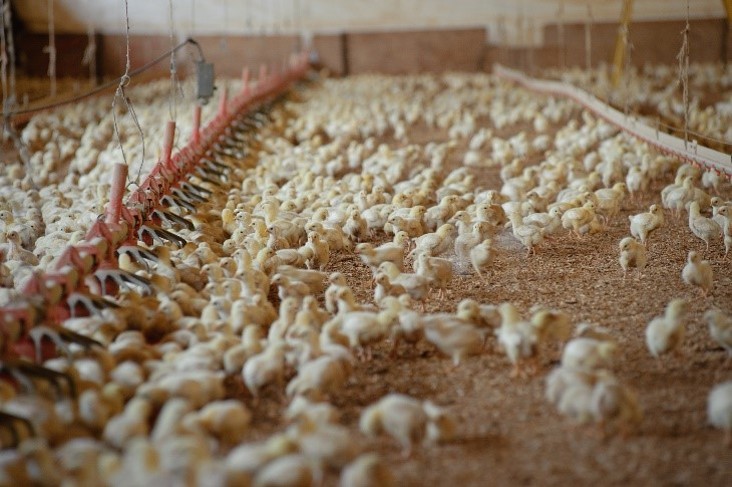The Court of Appeal has quashed a planning permission granted by Shropshire Council in 2017 for an intensive poultry farming facility near Bridgnorth in Shropshire. The fundamental question of the appeal was whether the LPA, when considering the application, failed to properly consider the likely effects of odour and dust arising from manure disposal.
Reviewing this judgement has highlighted the consequences of approving an application which relies on an inadequate environmental statement (ES); and has also clarified the relationship of environmental permits to Environmental Impact Assessment (EIA) planning applications.
Context of the case
On 1 September 2017, Shropshire Council granted permission for the erection of four poultry buildings at Footbridge Farm. The owner, also the applicant, intends to use the buildings for intensive rearing of poultry. The facility would operate on a 48-day cycle, rearing 210,000 chicks for 38 days and then cleaning the buildings to prepare for the next cycle. Roughly 1,575,000 broiler chickens would be reared over a year. This would produce approximately 2,322 tonnes of manure, which would be disposed of on the applicant’s fields, and any surplus would be spread on third party owned fields near to residential areas. The appellant is a local resident, Ms Squire, who lives about 300 metres from land on which manure might be spread.
On granting planning permission, the Council concluded that the technical assessments submitted within the ES ‘are generally satisfactory’, and that ‘adverse impacts on local amenity can be satisfactorily safeguarded’. Additionally, the environmental permit issued and regulated by the Environment Agency (EA) would provide another level of control sufficient to address dust and odour issues.
Following the High Court’s dismissal of the appellant’s claim for Judicial Review of the Council’s decision, Ms Squire appealed against the Judge’s decision on two grounds:
-
The Judge was wrong to conclude that the environmental permit issued under Reg.13 of the Environmental Permitting Regulations would control the management of manure outside the site to which the permit is related; and
-
The Judge was wrong to consider the development’s likely environmental effects had been assessed adequately and lawfully in accordance with the EIA legislation.

Broiler chickens - source: Wikimedia Commons
Summary of the judgement
The Court of Appeal first addressed the interpretation and scope of the Environmental Permit, which would be a requirement for an operation of this scale. It held that there was no misunderstanding of the permit’s control, which clearly included removal of manure from the site and the EA would enforce this. The officers had simply misunderstood the role of a future ‘manure management plan’ (MMP) that was referenced in the EAs consultation advice letter as though it were an assessment to reduce the risk of pollution from manure disposal. MMPs are a requirement under the Environmental Permit Regulations (not under the site-specific permit) and must also comply with the statutory Code of Good Agricultural Practice.
However, the EA had made clear in its letter that the MMP would only relate to the applicant’s land and would not control any issues arising from activities outside of the permit boundary (drawn around the chicken sheds only). More importantly, the MMP specifically relates to risks of polluting surface or groundwater – not odour and dust. Therefore, it cannot be assumed that in enforcing the site’s permit, the EA will provide additional control contributing to minimising effects of odour and dust outside the permit area.

Manure spreading at a Welsh farm - source: Wikimedia Commons
In relation to the soundness of the EIA, the Court considered that impacts on neighbouring properties, generated by odour and dust from manure disposal activities were indirect impacts of the proposed development therefore must be assessed through the EIA. However, the ES did not identify the third-party land on which the 1,500 tonnes of manure was going to be spread each year, nor did it attempt to provide a meaningful assessment of the likely polluting effects the manure spreading – either on the applicant’s land or any other land. The Court held that the requirement of an MMP to be produced in the future, was not a substitute for the lack of assessment in the ES, and therefore, the ES was deficient and not compliant with the EIA Regulations. The appeal was allowed, on both grounds.
Lessons learned from this case
Although the case’s poultry context may not be relatable to many, this decision is a reminder of the importance of ensuring that all EIAs clearly identify and fully assess all impacts of a development - direct and indirect. As the PPG states, mitigation measures are designed to limit or remove any effects of a development, consequently an ES cannot rely on mitigation to mitigate an effect that hasn’t been identified within the assessment. Furthermore, care must be taken to understand the scope, role and effect of any regulatory process, such as environmental permitting, that is considered within an ES. For instance, considering whether a permit can be relied upon as adequate mitigation, and whether mitigation is required beyond the regulatory boundary of such a permit.
The appeal could perhaps also result in more thorough scrutinisation of generalised commitments which have become commonplace within ESs for similar developments, such as compliance with the Code of Good Agricultural Practice, or the fact that the process of manure spreading, as intended in this application, is common practice in farming of this intensity.
Overall, we now know not to get over EGGcited when chickens are involved, as you should never hurry EIAs concerning slurry!





